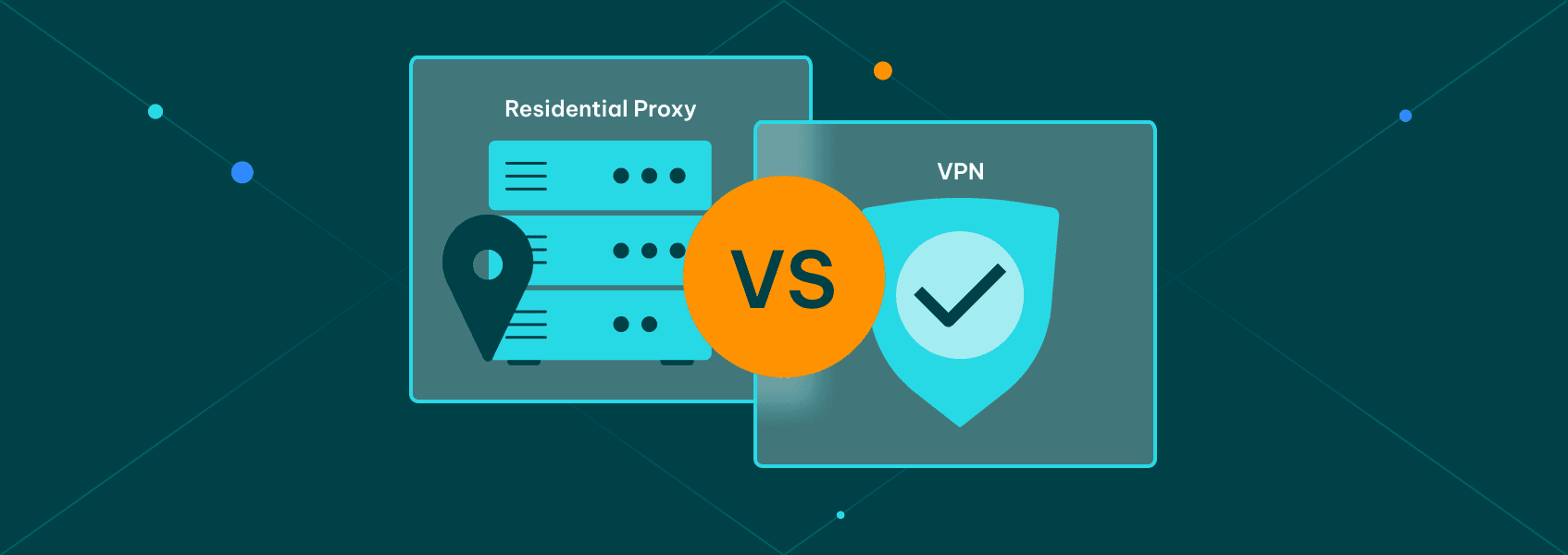What is Bot Traffic? Tips to Detect and Block Malicious Bots
Proxy fundamentals

Vilius Dumcius
Bot traffic is an increasingly growing concern for website owners. They are capable of affecting your website performance and distorting analytics data.
It makes it essential for you to understand how bots enter your website and how to protect your site. In this guide, you will learn the basics of bot traffic, what types exist, and how you can safeguard your website against malicious bots.
What is Bot Traffic?
Bot traffic refers to visits to websites from computer programs, also known as bots, rather than genuine human users. Bots run tasks over and over – they scan websites, click around, and grab data faster than humans ever could.
There are two types of bots: good bots and bad bots. Good bots help keep the internet running smoothly. Bad bots, or malicious bots, on the other hand, can fill out forms with spam, copy your content without permission, and crash your servers by overwhelming them.
Types of Bots: Good vs Bad
As mentioned before, there is good bot traffic and bad bot website traffic. First, let’s see how they compare, and later, you will discover how you can allow one while preventing the other.
Good Bots
Good bots are designed to help websites operate efficiently or improve user experience. Here are some examples of good bots:
- Search engine crawlers
These bots index websites so they appear in search engine results, and people can find relevant information easily.
- Social media bots
Used for automating post-sharing or collecting information for insights.
- Shopping bots
The main function of these bots is to help users compare prices and availability of products online.
Bad Bots
Bad bots, on the other hand, are harmful and can disrupt or crash your site. Here are some common types of malicious bots:
- Spam bots
Flood forms, comment sections, or inboxes with spam messages.
- Scraper bots
Used to steal content, pricing data, personal information, or other data.
- Imposter bots
They mimic legitimate human traffic to bypass security measures and execute attacks, such as DDoS attacks.
Bad bot traffic can strain your resources and damage your website’s reputation, making it essential to detect bot traffic as early as possible.
The Impact of Malicious Bot Traffic
When malicious bots invade your website, they cause annoying problems and leave behind a trail of issues for the development team:
- Server strain and downtime
Malicious bots flood your web server, making it slow down significantly or even cause crashes.
- Poor user experience
Bad bots cause lags and delays for users, making your site harder and more frustrating to navigate.
- Revenue loss and fake traffic
Lags aside, bots disrupt your analytics data, which could lead to poor data-driven decisions and wrong marketing strategies.
- Reputational damage
If malicious bots manage to scrape your sensitive data or spam your visitors or clients, your brand could suffer from serious reputational damage.
How to Identify Bot Traffic on Your Website
If you’re seeing signs of potential bot traffic but you’re unsure about how to identify bot activity with certainty, use these methods:
1. Check server logs
Look for patterns like repeated requests from the same IP addresses or unusual activity at odd hours.
2. Conduct behavioral analysis
Bots often show erratic behavior, like quick bounces or navigating your site in non-human ways.
3. Establish honeypots
Hidden elements on your site can trap bots attempting to access unauthorized areas.
Signs of Bot Traffic
- Unusual traffic spikes: a sudden surge in web traffic could indicate bots at work.
- High bounce rates: bad bots rarely engage with your content.
- Fake referrals: malicious bots might mimic referrals to trick analytics tools.
If you’ve noticed any of these things on your website, it’s most likely that malicious bot traffic has found its way to your website. In the next section, you will learn how to block and remove them to prevent potential DDoS attacks and fake traffic.
Strategies to Block and Remove Malicious Bots
If you identify malicious bot traffic on your site, you need to establish strong defenses to protect against them. Here are some steps you can take:
1. Start with a web application firewall (WAF). It acts like a security guard on your website, checking and blocking unwanted bot traffic.
2. Set up CAPTCHAs and honeypots. They help catch bots but allow genuine users through easily by adding challenges that bots usually can’t solve.
3. Put session limits. If you limit how many times anyone can ping your server, it stops spam bots from flooding your site with infinite requests.
How to Ensure Good Bots Can Crawl Your Site
Blocking bad bot traffic shouldn’t stop you from allowing search engine bots to index your pages. Here’s how:
- Optimize site architecture. Make your website easy for legitimate bots like search engine crawlers to navigate.
- Remove unnecessary links. Clean up links to irrelevant or outdated pages.
- Control crawl rates. Limit how often bots can crawl to reduce strain on your web server.
Conclusion
Bot traffic is a confusing mix of helpful tools and harmful threats with rotating IP addresses. By learning to spot and block malicious or DDoS bots while allowing good bots to crawl, you can protect your site from bad bot traffic and ensure smooth operations. Always monitor your analytics, maintain robust defenses like a web application firewall, and stay proactive in the fight against malicious bot traffic.
Frequently Asked Questions
How does bot activity impact websites and SEO?
Bot activity, particularly from bad bots, can affect your SEO by distorting metrics, causing downtime, and scraping content. Good bots, like search engine crawlers, are essential for SEO, so balance is key.
Can Google detect bot traffic automatically?
Yes, Google uses machine learning and advanced algorithms to filter out automated traffic from analytics, but it’s not entirely foolproof. Extra precautions on your end help.
How do bots avoid detection?
Bots can avoid detection by rotating IP addresses, mimicking human behavior, or pretending to be good bots like search engine bots.


